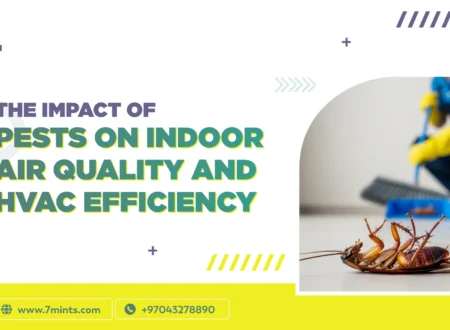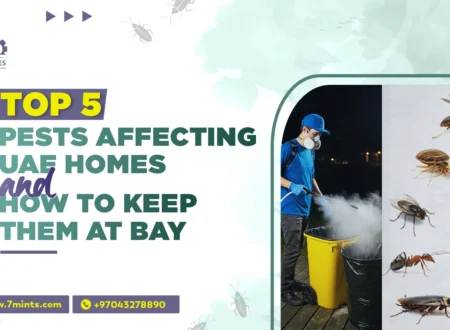Due to its aggressive behavior and painful sting, the Fire Ant is becoming increasingly concerning in many parts of the globe, including the UAE. Such nuisances make it unsafe for humans, pets, or native wildlife to interact with any outdoor area. It is imperative to know their identification, prevention, and treatment methods in a truly safe way so that we can maintain a safe and pleasurable environment. We are going to cover everything about fire ant safety and prevention, throwing in some practical tips and expert advice.
Recognizing Fire Ants and Their Habitats
Identification of fire ants and their nests is the first step in prevention and control.
Physical Features
These ants are rather small, ranging from 6 mm long, and possess a copper-brown coloration with a somewhat darker shade towards their abdomen. Within one nest, you may also notice ants of various sizes, as army ants are the only ants to display such behavior within a colony. Given their aggressive behavior, they will swarm immediately after the disturbance, posing a threat to anyone nearby.
Nest Characteristics
These ant mounds, also known as fire ant nests, may appear as dome-shaped peculiarities of the local landscape or as flat patches of loose soil with great pride in usually having no holes or openings at the top. The mounds will be seen in open, bright, sunny locations, such as lawns, gardens, alongside driveways, or footpaths. A few days after heavy rain, the fire ants erect their mounds higher so the mounds can be seen, yet are more widespread.
Behavior
Fire ants are very aggressive and will fiercely defend their nests. If one were to disturb their mound, hundreds of ants would rapidly come out and sting their antagonist multiple times. The stings will bring excruciating pain, severe itching, and in some instances, allergic reactions that require immediate medical attention.
Common locations
Fire ants in the UAE are found mostly in gardens, parks, and sometimes inside homes, especially in wet or recently disturbed areas. They could also be hiding under rocks, pavers, or debris, and this poses difficulty in discovery until the infestation is well on its way.
Safety measures in dealing with fire ants
Ensuring your safety and that of your family and pets from fire ant stings is good, especially when working outdoors or cleaning outside.
Always Wear Protective Clothing
Always ensure that you are wearing closed shoes, long pants, and gloves when working in areas potentially infested with fire ants. Such clothing protects one from being stung while they may be gardening, moving debris, or inspecting an outdoor area. Children should also be appropriately dressed while playing outdoors in potentially infested zones.
First aid for fire ant stings
If you or someone else is bitten by a fire ant, wash the affected area with soap and water to help prevent infection. Apply a cold compress to reduce swelling and pain. Use antihistamines such as those found in most pharmacies to reduce itching. If severe swelling or an allergic reaction appears, seek a doctor’s help immediately
Keep Children and Pets Away
Inform children about the dangers related to fire-ant mounds, making it clear that they should never touch or disturb the nests. Pets are still at risk, as these curious animals may dig into or sniff around these mounds. It is advisable to keep an eye on them while they are outdoors and keep pets on a leash in areas marked for the presence of fire ants.
Don’t Disturb Nests
Under no circumstances should you be poking, prodding, or disturbing fire-ant mounds in any way. Any sort of disturbance will result in aggressive swarming, attacks from multiple ants, and a higher chance of serious reactions to ant stings. If you do happen to encounter a mound, be sure to mark the spot and warn others to stay clear of the area until proper treatment has been applied.
Upkeep and Prevention for Home and Garden
Its preemptive measures turn out to be much easier and safer than trying to treat active colonies.
Maintain Yard Cleanliness
A tidy yard is unattractive to the ants. Keep your lawn freshly mowed while ensuring that shrubs are kept neat and trimmed. Get rid of any piles containing dry leaves, cut grass, or any dead vegetation that might serve as a nesting ground. Properly sealed compost bins, coupled with the swift removal of any fallen fruit, will also go a long way in minimizing the food sources for these ants.
Seal Entry Points
Check the foundation of your home and the windows and doors for cracks or small gaps. Make sure to seal them so ants do not wander inside. Fire ants can gain entry through the smallest openings, and thus keeping them out of indoor areas calls for thorough inspection and maintenance. Check out our latest blog post on Natural Remedies for Pest Control: Safe and Effective Solutions
Regular Yard Inspections
Inspect your outside spaces for new mounds, especially after rainfall or landscaping. Early detection means early treatment, which prevents a mature colony that is difficult to control. From a distance and using a stick, gently probe any suspected mounds to confirm activity.
Use Ant Baits and Barriers
Granular or liquid insecticides for fire ants compound an efficient barrier when applied throughout the perimeter of your property. The use of ant baits is highly common since worker ants take the poison back to the colony, targeting the queen to annihilate the nest from the inside. Follow directions given on the product pack and reapply after a heavy downpour to maintain protection.
The Professionals and Permanency
Sometimes the solutions require more malice than DIY can offer. The professionals are guaranteed to provide safe, effective, and permanent results.
Pest Control Services
Following the limitations of considering home remedies and over-the-counter sprays and chemicals for treatment, pest control operators with a license should be brought in. They use more potent insecticides that could be specific to the particular pest and have the necessary knowledge to use these chemicals in such a way as to reduce any chance of affecting humans, pets, or the environment. They can locate hidden nests and treat bigger or harder-to-reach areas.
Integrated Pest Management (IPM)
IPM utilizes a combination of periodic monitoring, prevention, and targeted treatment for sustainable control of fire ants. It emphasizes the least chemical use and its long-term prevention, which may be an option suitable for families, schools, and environmentally sensitive areas. Methods involved in IPM can be habitat modification, physical barriers, and selective pesticide application.
Community Approach
Fire ants can be easily transmitted from one neighboring property to another. Working with neighbors and local authorities can contain infestations on a larger scale and prevent reinfestations. Community-wide treatments, i.e., organized days for treatment or public awareness campaigns, tend to be more effective than actions done piecemeal.
Follow-up Treatments
Fire ant control is a treatment that never ends. Schedule periodic inspections and continuing treatments so that nests do not return. Keep records of treated areas, and monitor for new activity, particularly after heavy rain or operations around landscaping.
Conclusion
Fire ants are a perennial pest and could pose a danger, but with the right knowledge and GARAGE preventive measures, you can truly tip the scales in favor of your home, family, and community. Don’t allow fire ants to keep track of your outdoor spaces—arm yourself with vigilance, prevention, and control measures; and, where necessary, consult a professional. Call us now for expert advice, customized prevention strategies, and proven pest control service. Together, let’s save your environment from food poisoning!










1 Comment
Comments are closed.